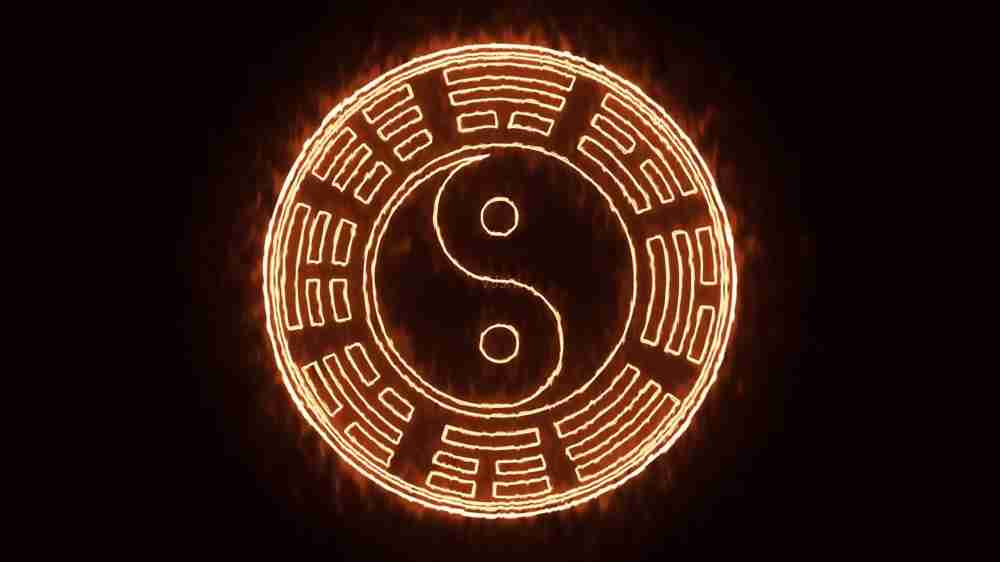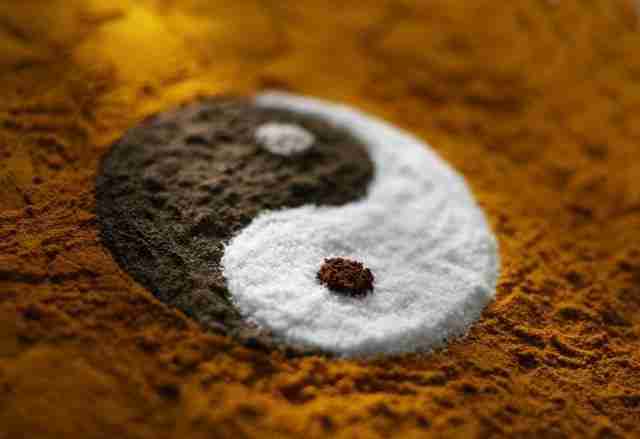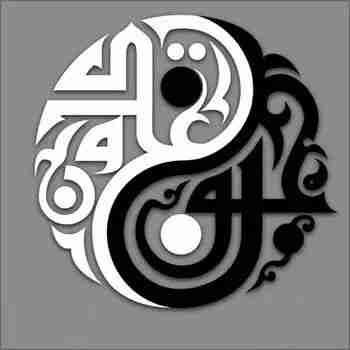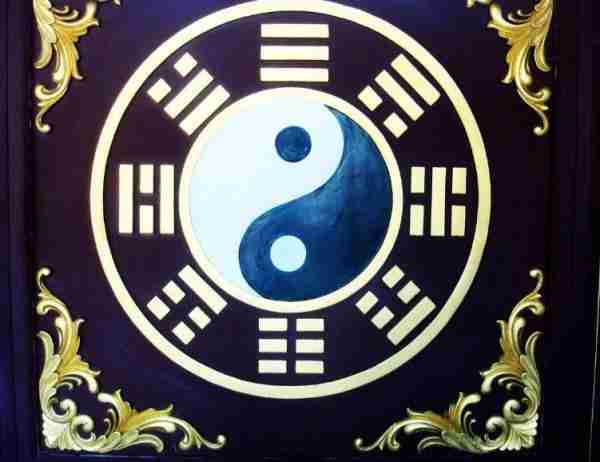You’ve probably said something like “You are the yin to my yang” in the past, but can you honestly say that you actually know the meaning of the two words ‘yin’ and ‘yang’ or are you using the phrase just because it’s been used too many times in the past and it sounds cool. Perhaps you actually complete each other?
The truth is without an actual understanding of the words, you may end up misusing them, and that is not a problem you want to deal with. This article delves into everything you need to know about Yin and Yang. We’ll also look at the meaning of the yin and yang symbols. So, let’s get right into it!
What Does Yin And Yang Mean?

Yin and Yang, 陰 and 陽, in Chinese is one of the most popular principles in Chinese culture. It is a principle that explains or represents the duality of things; and the idea that two completely opposite elements or characteristics can actually exist harmoniously while also complementing each other. Similar ideas based on this principle would be something like the quote – there can be no light without darkness.
In terms of the symbol, the black segment is the Yin while the white section is the yang, and each segment represents a set of qualities that are opposite of each other.
Yin and yang or Yinyang could, therefore, be said to represent or describe two complementary forces that makeup all the aspects of and the phenomena in life. It is a principle that encompasses different actual processes in the universe and all that’s in the universe. As a result, yin and yang are depicted as the dark and light halves of the circle, in perfect balance with each other.
According to the Wade-Giles Romanization, Yin-Yang or in- yō, in Japanese, is the Eastern thought that there are two complementary forces that makeup life’s phenomena and aspects.
The symbol for Yin represents darkness, femaleness, earth, absorption, and passivity; it is also present in the even numbers, in streams and valleys. Yin is also represented by the tiger, a broken line, and the color orange. Yang, on the other hand, is a symbol that’s conceived as the heavens, light, maleness, penetration, and activity. Yang also represents the odd numbers, the mountains, the dragon, an unbroken line, and the color azure.
Yin and Yang are both believed to be proceeds from the Great Ultimate or the taiji, and they have this interplay with one another where one increases as the other decreases; and they are, therefore, representations of the actual processes that take place in the universe and also in all that is in the universe. And when in harmony, yin and yang are depicted as light and dark, perfect halves of a complete circle.
What Is The Origin Of Yin And Yang

While the origins of this principle remain rather obscure, the concept is associated with the Chinese idea of wuxing or the Five Phases, namely, wood, metal, fire, water, and earth; and it’s also believed both of these ideas lend substance to the characteristics Chinese belief in the rather cynical theory associated with dissolution and becoming, as well as the inherent interdependence between nature and human activity.
The origin of the concept is rather ancient, though, and its earliest mention is believed to date back to China, in the 3rd century BCE. Yin and yang is believed to have been formed based on the cosmology school of thought or what’s also referred to as the Yinyang School. The school’s main representative Zou Yan taught about the significance of the principles of yin and yang, and these teachings permeated through different aspects of Chinese thought and teachings, including medicine, astrology, art, divination, and the government.
But it wasn’t until early 675CE that the concept was introduced in Japan, where it was used to influence divination, the government, and control of the calendar that were all based on the principles of yin and yang. These principles were not in use for too long, though. But even with disuse, it had permeated into all the levels of society in Japan, persisting into modern times.
Yin and Yang remain the biggest principle that is associated with beliefs of some things being lucky or unlucky, and also in considerations for zodiac signs and directions when it comes to arranged marriages.
Yin And Yang Symbol History
Yin and yang is a principle that’s been around for centuries. It started in China, where it was taught alongside the Five Elements in the School of Naturalists. Yin and yang principles were taught before the Five elements because Yin and yang lay at a much deeper level in nature, as it were, and it’s the most ultimate principle conceivable in ancient Chinese cultures. Today, the details of the Five Elements are well-known today, even more than Yin and Yang.
As mentioned above, the idea of Yin and Yang was introduced by Zou Yan between 305 and 240BC, and he remains the most important name when it comes to understanding Yin and Yang.
And though the principles of yin and yang are not covered on the only surviving documents by Zou Yan, his school known as Yin and Yang School or Yin Yang Jia, which shows that the principle dates back to Zou’s time at the beginning of the -4th century.
Though the concept is missing from his works, the first known documentation or reference to this term was found in the oracle bones, and the concept is regarded as different parts or elements of nature. Then there was the school which taught all about the principles of patterns and balance.
Note that the first Chinese characters dictionary was created around 100AD, and in this dictionary, yin was defined as a closed door, a river’s south bank, darkness, or the mountain’s north side; while yang was defined a brightness, height, or a mountain’s south side. In another recording, yin and yang appearing together were defined this way – yin was the hill’s shady side and yang the sunny side.
While everything to do with the concept was slowly taught across China, the concept spread more widely during the reign of the Zhou Dynasty between 1050 and 771BC. It was at this time that the principle was associated with different philosophical ideas, with Lao Tzu and Confucius incorporating the principles of yin and yang in their teachings. Around the same time, yin and yang also became important concepts in Taoism (Daoism), and the yin and yang symbol was soon seen in Taoist robes, temples, and in their incense burners.
Note, however, that when it’s all said and done, there is no actual or exact date that pinpoints when the principles or symbol of yin and yang started. But what’s known is that the principle was used around 1000AD the popularized by the Zhou dynasty by the philosopher Zhou Dunyi.
Who Created Yin And Yang?
The principle of Yin and Yang was brought to life or popularized by the great philosopher Zhou Dunyi or Zou Yan and later by Confucius and Lao Tzu. But the original creator of the concept remains unknown.
What Is The Yin And Yang Symbol

The symbol for yin and yang is also known as the taijitu or ba gua. It originated from China, and it’s one of the most popular symbols today that is incorporated in jewelry, notebooks, and clothes. The symbol comes in different shapes, but the most common one features a circle with two interlocking teardrops or swirls, one black, and the other white. Each of the teardrops has a dot in the middle in the opposite color.
The yin and yang symbol is believed to be the symbol of the interconnectedness of the (natural) world. It shows that there can be no positive without negatives, no light without a shadow or darkness, and nothing opens that doesn’t close. So, the whole symbol represents interrelatedness, and when you look at it, you will notice that it lacks a straight line passing through the center of the circle to represent the divide between yin and yang. Instead, there is a soft S-shaped line dividing the two elements, meaning that yin and yang’s connection constantly flows into and out of each other.
On top of the symbol where the yang swells, the yin contracts, and the opposite is true at the bottom. So, even in the ideal situation, harmony is only attainable when there is an equal balance between the two elements.
Also, note that the symbol is made in such a way that not only do the black and white segments with each other perfectly, each of the elements has a smaller circle at the center, in the color of the opposite element to show the connection between yin and yang, while also pointing to the fact that nothing is ever absolute. So, in yin, there is always a little yang, and the yang has a small aspect of the yin.
Lastly, you have the larger outer circle that surrounds the yin and yang – it represents the universe’s entirety and that the yin and yang are a representation of all that we know and what we don’t know.
What Is the Meaning of Yin And Yang?
Semantically, yin and yang are rather complex words, but according to the translations from the Chinese-English dictionary by John DeFrancis, here are definitions for the concept of yin and yang.
Yin can be defined or described as a passive, negative, or female principle of nature. But there are other terms that can be used to define yin, and these include a shaded orientation, concealed/hidden/ convert, the north side of a hill, overcast, negative, or the moon.
Yang, on the other hand, has everything to do with the male/ active/positive principle in nature. It also relates to the sun, openness or overt, relief, belonging to this world, masculinity, south of the hill or the river’s northern banks.
Which Is Yin And Which Is Yang?
Yin is the black section of the yin and yang circle, while yang is the white side.
Why Yin And Yang Are Important?

Yin and yang is a concept that represents a collection of important principles. But before we look at the significance of the whole idea behind yin and yang, let’s first have a look at what the main principles of yin and yang are.
- Togetherness
Yin and Yang, as a whole, teach about the importance of togetherness. Essentially, it represents the opposite forces, which, when joined, form and represents everything in the natural world, and together, they are representations of the different facets of the universe, reminding us that everything in nature needs to be carefully balanced to be complete.
- None of them is completely dominant.
Yin and yang reinforce the idea of duality, specifically the fact that yin cannot exist without yang, and in nature, movement doesn’t exist without any rest, or the shade’s existence depends on the sun. So, both yin and yang have to be always present in a balanced state, and neither is superior.
- Balance leads to harmony – but external factors could disrupt the state of balance.
This is the other important principle that we learn from yin and yang. It points to the fact that in the ideal scenarios, yin and yang are in perfect balance, and each has an equal share of the whole, and when this is the case in nature, then there is equity. But even after the balance is achieved, external factors can disrupt the balance.
- Yin and yang are not static.
Although these concepts are portrayed to be in perfect balance, it’s important to note that they are never static, and the state of balance between them is ever-changing – think of how these two segments are ever-flowing into and also out of each other, and there is no point at which either yin or yang ever stop moving. This is the same in nature, the sun rises and sets every day, and it’s always day and night.
Now that we understand the principles of yin and yang let’s look at the importance of yin and yang.
Good health
While the principles of yin and yang are applicable in all areas of life, understanding the impact of the concept is essential for the health of all humans.
The yin and yang balance is especially important in Western medicine, where the balance is conceived as the balance of your autonomous nervous system or the ANS. The ANS acts automatically and unconsciously, and it affects every aspect of the human body, which has to be in balance. Loss of balance manifests as a disease. In the ANS, the sympathetic nervous system (fight or flight) is the Yang, while the parasympathetic system (feed & breed or rest & digest) is the Yin. These two must be in balance for an overall healthy state. Overstimulation of the yang affects the yin and the body’s healing by causing a yin deficiency. Over time, this imbalance is seen as constant anxiety, trouble sleeping, muscle tightness, feeling frustrated, etc.
This principle has been applied in Chinese traditional medicine for centuries, and it’s interesting to note that Western medicine is now borrowing a leaf from the principles of yin and yang in encouraging good health.
This balance is also necessary for nature. Think of the balance of flavors (sweet and bitter/tangy), which must be well-balanced for the best meals. Foods on different ends of the taste spectrum have to be balanced for them to taste good – this is yin and yang in perfect balance.
In the human body, yang tends to be stronger during the day when it’s warm, bright, and sunny out, while yin takes over in the night when the moon is out.
Yin And Yang Religion
Yin and yang holds its roots in Taoism, which is one of the older Chinese philosophy or religions. While Taoism was based on a number of other concepts, yin and yang is some of the concepts that the religion made popular. This, along with medicine and religion, not to mention the psychophysical energies permeating the universe.
It’s also worth noting that yin and yang started out as attempts to answer the hard questions about the origin of the universe. So, according to the yin and yang’s thought on the subject, it is believed that the universe came to be as a result of the interactions between two opposing primordial forces, the yin, and yang. And because of the fact that experiences of things often happen through change with processes coming into existence and passing out, these things must all have or come to be through the forces of yin (lack of being) and yang (being).
So, we hope that this article answers all your questions about yin and yang and also has given you a better understanding of the principle, plus its effects/ importance.
What’ѕ uр, just wanted to mention, I liked thіs article.
It was pгactical. Keep on posting!
Can you tell ᥙs more about this? I’d like to find out some additional
information.
Founded inside 2003, Bangladesh Sociological Modern society
will be an connections associated with sociologists from Bangladesh established for the campaign associated
with sociological training, study and newsletter inside Bangladesh.
The primary independent of the World is usually,